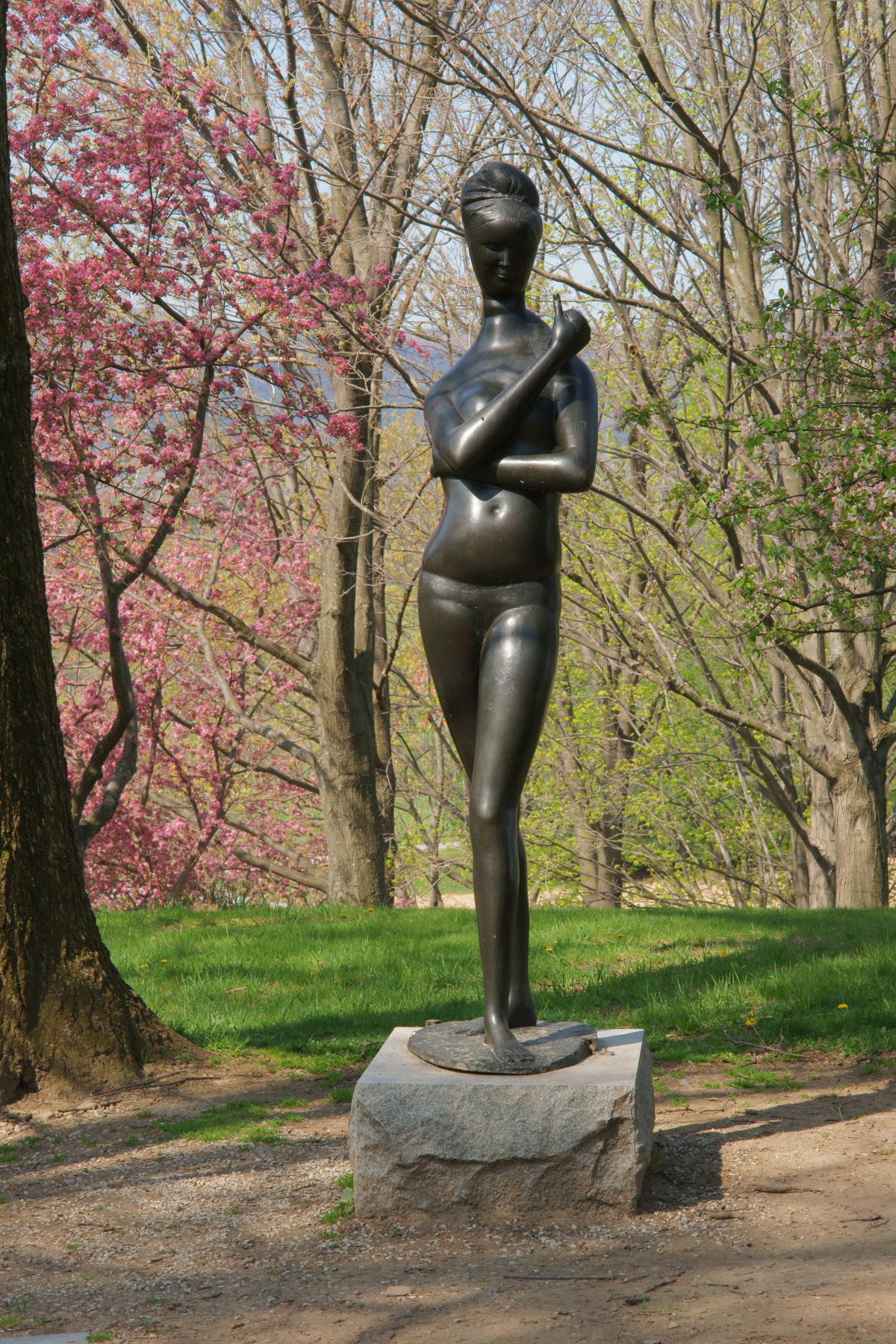Off view

Italian, 1913–1995
Tall Bather No. 1, 1956
Bronze
6 ft. 11 in. x 18 in. x 28 in. (210.8 x 45.7 x 71.1 cm)
Gift of the Ralph E. Ogden Foundation
© Estate of Emilio Greco; Archivi Emilio Greco Roma
Photo by Jerry L. Thompson
Tall Bather No. I is the first in a series of seven sculptures of variably posed female bathers, a central theme in Emilio Greco’s work. Greco considered his Large Bathers to be dancers, and their movements and poses, a progressive choreography. He planned to create as many as twelve Bathers on this scale and place them around a pool or pond, but he never realized the final five works in the intended series.
Tall Bather No. I stands in a relaxed but contained contrapposto pose: her torso is slightly twisted and she leans back on a straightened leg, while her front leg bends slightly. Her arms wrap around her upper body and terminate in flexed hands, one nestled under her arm, the other gesturing toward her shoulder. Her head is slightly tilted and her eyes look downward, perhaps suggesting contemplation. The curved forms of her body and the elegance of the sculpture as a whole evoke the quality of the sixteenth-century Italian Mannerist painters, who experimented with the torsion, elongation, and curvature of the human figure. These classical associations are, however, disrupted by the decidedly stylized, modern elements of the figure, such as her hairstyle and fitted undergarment.
Tall Bather No. I stands in a relaxed but contained contrapposto pose: her torso is slightly twisted and she leans back on a straightened leg, while her front leg bends slightly. Her arms wrap around her upper body and terminate in flexed hands, one nestled under her arm, the other gesturing toward her shoulder. Her head is slightly tilted and her eyes look downward, perhaps suggesting contemplation. The curved forms of her body and the elegance of the sculpture as a whole evoke the quality of the sixteenth-century Italian Mannerist painters, who experimented with the torsion, elongation, and curvature of the human figure. These classical associations are, however, disrupted by the decidedly stylized, modern elements of the figure, such as her hairstyle and fitted undergarment.
